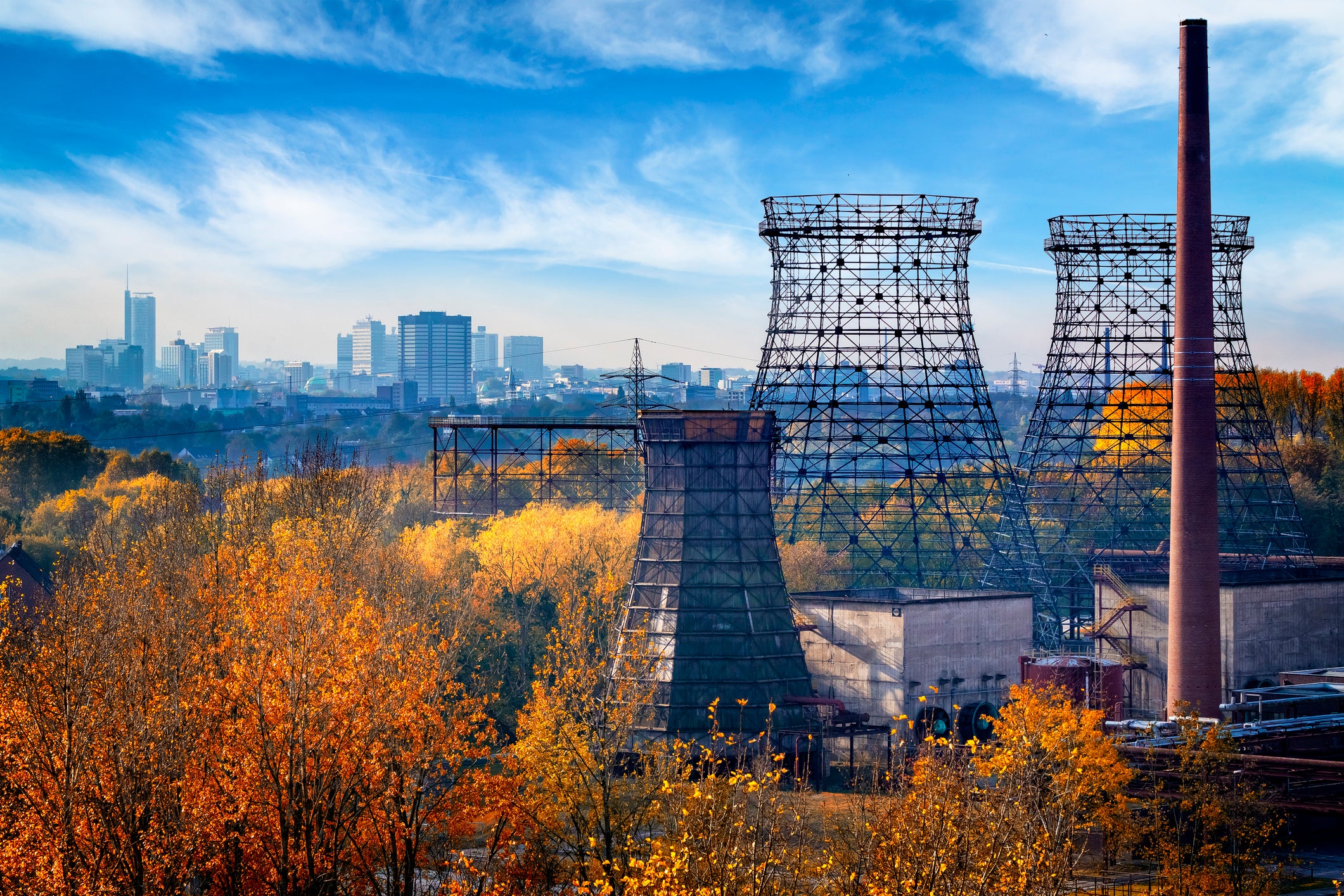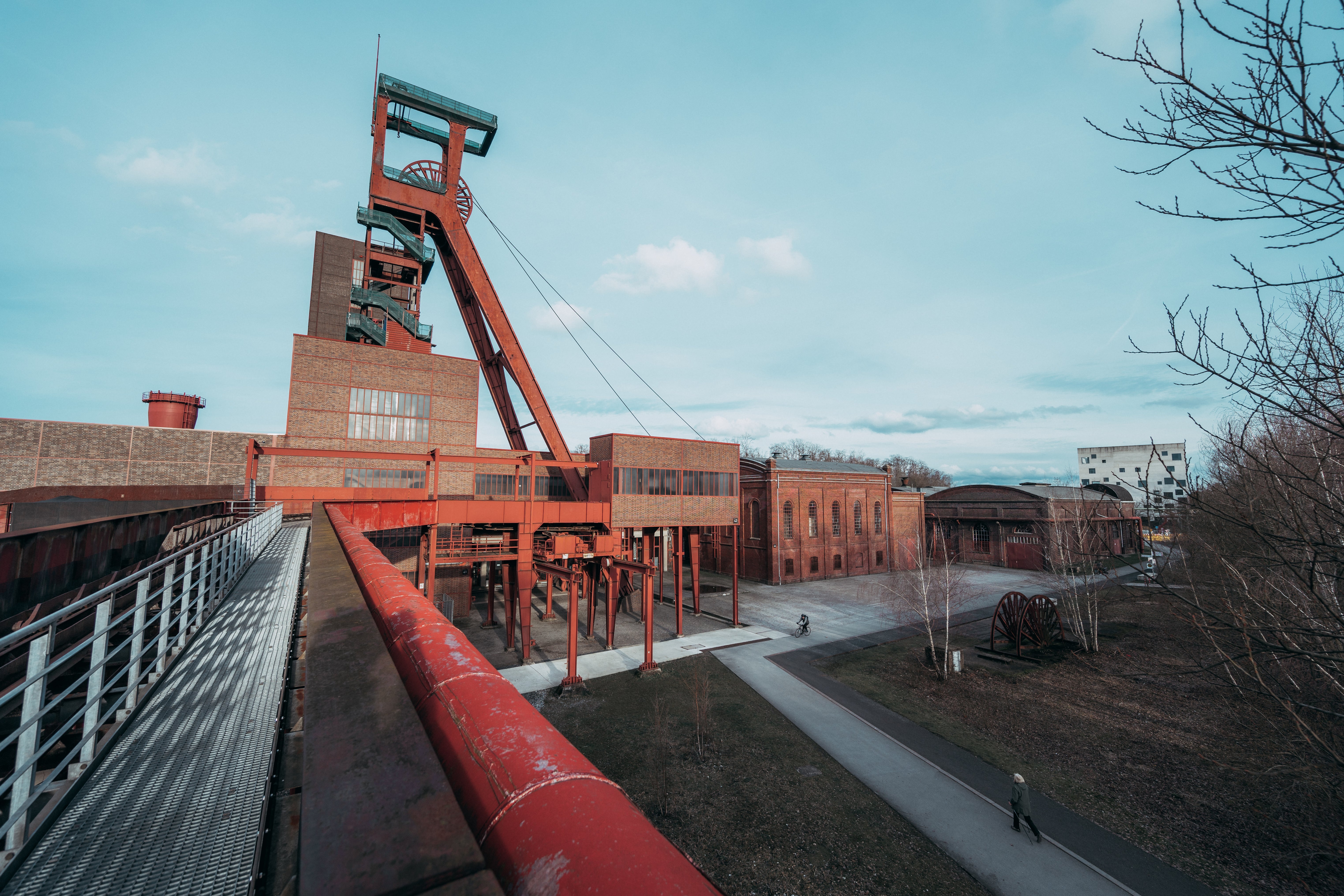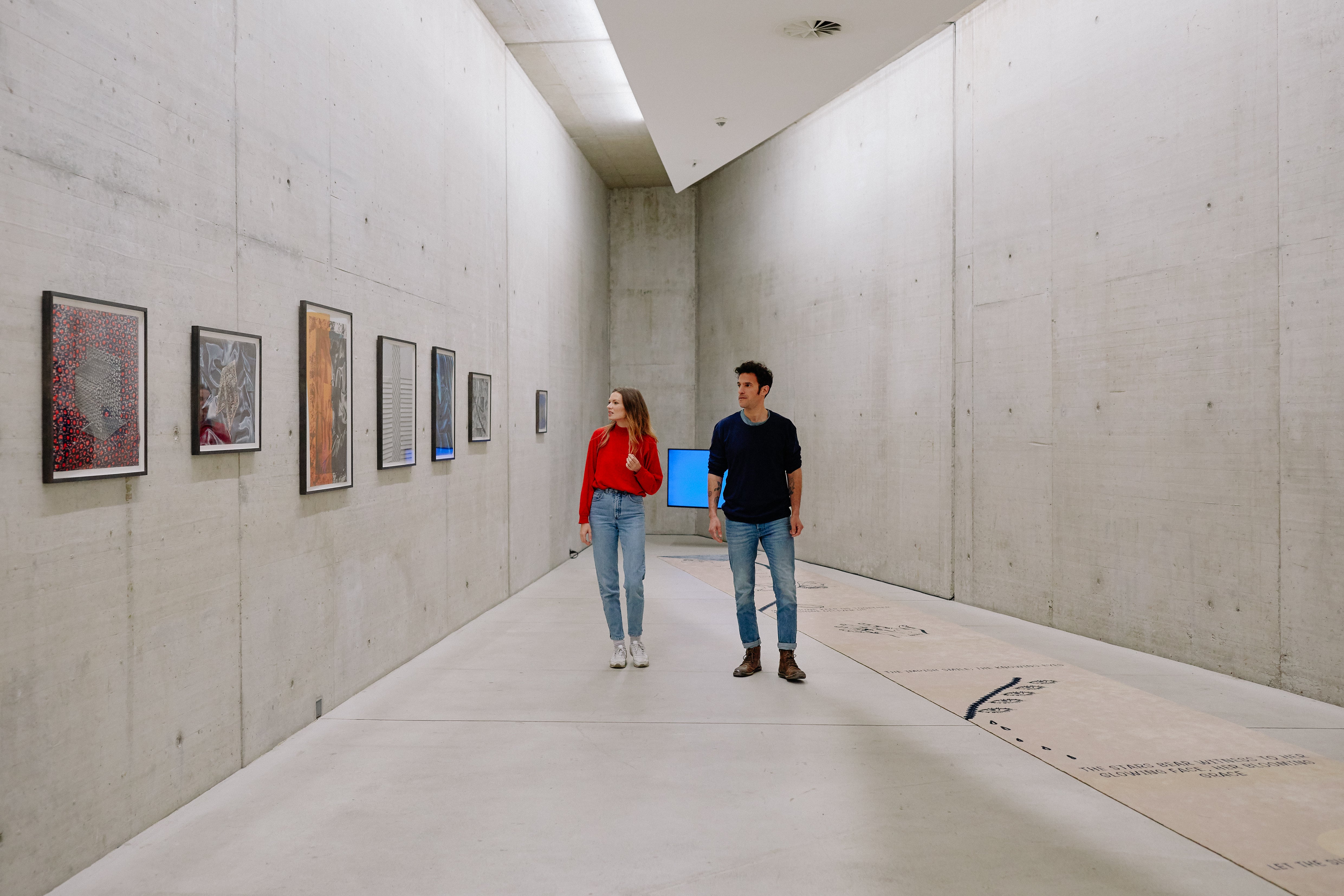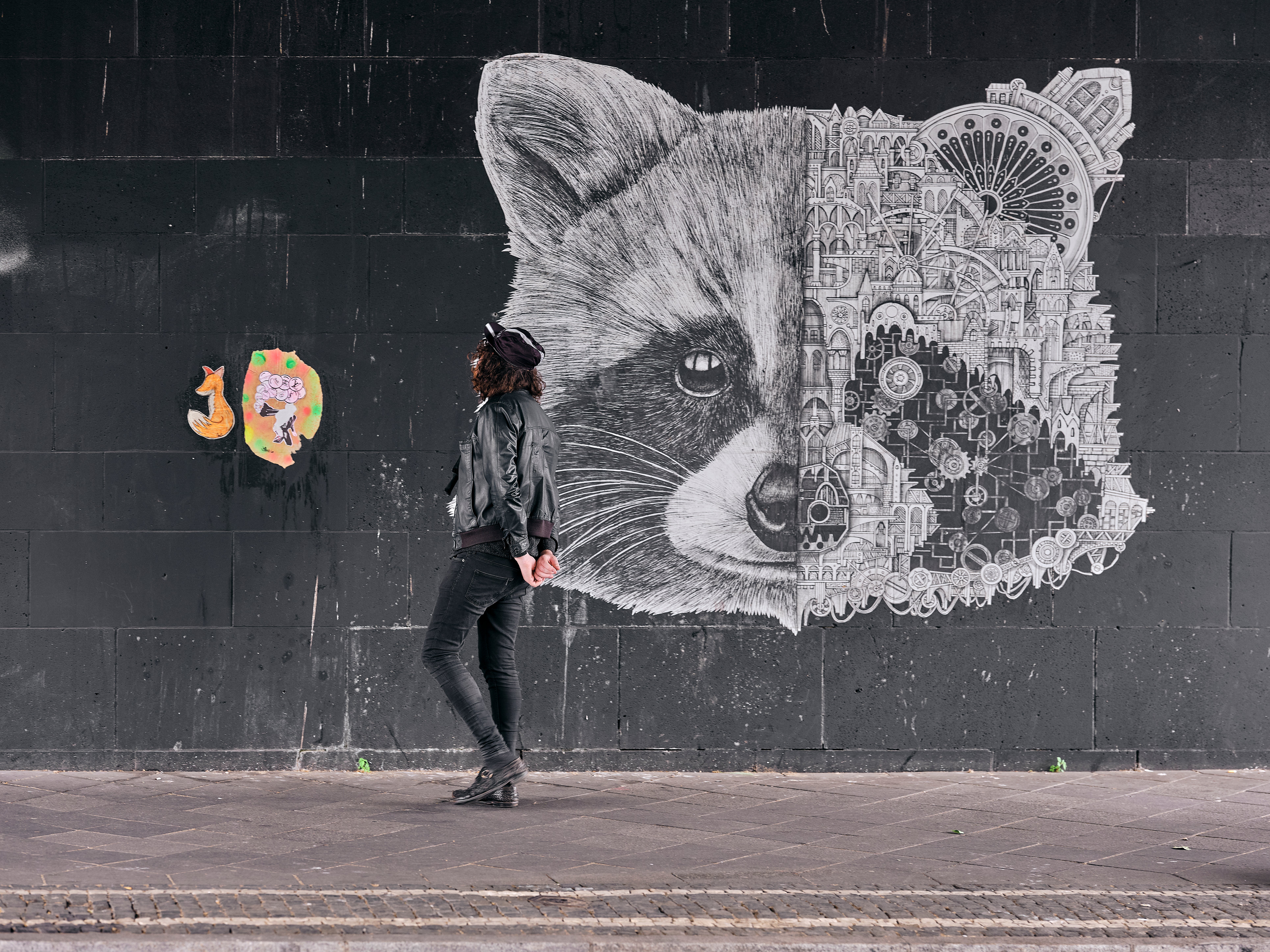What the regeneration of Germany’s Ruhr can teach us about ‘levelling up’
William Cook has made several trips to Germany’s industrial heartland over the years. His latest reveals some lessons our own politicians would be wise to take on board


Standing on the windswept roof of the Zeche Zollverein – formerly Europe’s biggest coal mine – Germany’s industrial heartland, the Ruhrgebiet (or the Ruhrpott, as locals like to call it), lies spread out below you like a map.
If you’d stood up here 40 years ago, you would have looked out across a sea of smoking chimney stacks. Today, you look out across a sea of trees. The Ruhr has become a forest, and the Zeche Zollverein has become a cultural centre, one of countless creative spaces housed in old industrial buildings right across this region.
How did the rust belt of the Bundesrepublik make the change from heavy industry to culture and ecology? And what can other countries learn from it?

During the 19th century, the Ruhr was the driving force behind Germany’s rapid evolution from a loose confederation of small states into the most powerful country on the continent. Rich in coal and iron ore, the area became a hotbed of coal mining and steelmaking. New railways sprang up to serve these industries, binding the states together, and prompting the creation of a free trade zone that marked the beginning of modern Germany.
Coal and steel from the Ruhr fuelled the German economy during both world wars, and so during the Second World War it was flattened by Allied bombers. In 1945, the British occupied what was left of it, and the Russians dismantled the remaining factories and shipped them back to Russia as reparations.
At first, the Allies planned to strip the Ruhrpott bare, but the Cold War put an end to that. Now that Germany was divided between East and West, the Allies needed to rebuild the West German economy as a bulwark against communism. Coal and steel were key components in this mission, so they allowed the Ruhr to rise again.

The Americans provided the investment, through the Marshall Plan, but it was the British who provided the administrative framework for the Ruhrgebiet’s revival. The Ruhr became part of North Rhine-Westphalia, a new state within West Germany’s new federal republic.
The boundaries of this new state were entirely artificial – born of necessity, not history – but it turned out to be an inspired creation. By uniting the industrial towns of the Ruhr with the wealthier cities of the Rhineland, Britain laid the foundations for Germany’s most prosperous and populous state, the powerhouse of the West German Bundesrepublik.
Comprising 53 conurbations, merged into one unending urban sprawl stretching for 40 miles from north to south and 70 miles from east to west, the Ruhr became the engine-room of the Wirtschaftswunder, West Germany’s post-war economic boom. However, the environmental cost was huge. With hundreds of mines, mills and factories, it was one of the most polluted places in Europe. Locals called it Das Land der tausend Feuer: the land of a thousand fires.
The air quality was awful, and the rivers were contaminated, with dire effects for public health as well as for local flora and fauna. Mining caused subsidence, which made it difficult to lay sewage pipes, so the River Emscher, which runs through the Ruhr, became an open sewer.
In the 1960s, there were half a million miners living and working in the Ruhr, but by the 1970s it had become clear that their days were numbered. Like their British counterparts, German miners could no longer compete with cheaper foreign coal.
Thanks to close cooperation between politicians, trade unions and industrialists, the Ruhr managed to cushion the blow through a gradual process of staggered closures and redundancies – in stark contrast to the slash-and-burn ethos of the Margaret Thatcher years in the UK. This conciliatory process gave mining communities time to adapt, but the central problem was still the same. After 150 years and 11 billion tonnes of coal, the Ruhr would have to find a new way forward.

Travelling around Germany in the 1990s and the 2000s, scratching a living as a roving reporter, I steered well clear of the Ruhr. I’d heard that it was striving to reinvent itself as a hi-tech centre: five new universities; 300,000 students; 100,000 new jobs in technology and environmental research... Germany’s Stern magazine renamed the Ruhrpott the iPott. After decades of decline, it looked like the Ruhrgebiet was on the rise.
I travelled to Essen, in the Ruhrgebiet, in 2010, when the Ruhr became a European Capital of Culture. I interviewed the festival’s general manager, Oliver Scheytt. He was adamant that this year-long jamboree would be good for business, and the numbers seemed to bear this out. Cultural capitals generally experienced a 20 per cent increase in visitor numbers during the year of the festival, he told me, and a 10 per cent annual increase thereafter.
And it wasn’t just pretty places that prospered. Glasgow’s year as a European cultural capital, in 1990, transformed its reputation. Liverpool enjoyed a 33 per cent increase in visitor numbers during its tenure in 2008. The city spent £70m on the festival, but research from Liverpool and John Moores Universities calculated that it had generated up to £750m.


OK, so the Ruhrgebiet probably wouldn’t end up out of pocket. But would there be anything to see? I spent a few days travelling around the Ruhr and I was amazed by what I found. Essen’s enormous coal mine, the Zeche Zollverein, which had been shut since 1986, had been converted into an arts centre: several galleries, a concert hall, and a cutting-edge design museum, conceived by Sir Norman Foster.
The site was full of people. Some were there to see the shows, others were just hanging out. This old mine had become a rendezvous – what Germans call a Treffpunkt. You could see why it had been designated a Unesco World Heritage Site.
From Essen I travelled on to Duisburg, where Swiss starchitects Herzog & De Meuron had converted an old corn mill, the Kuppersmuhle, into an art gallery. This robust building was a fine forum for modern art, but even more impressive was how it had become a magnet for more humdrum pleasures. Duisburg’s Kuppersmuhle is on the Innenhafen, formerly Europe’s biggest inland harbour, where the Ruhr meets the Rhine. Since the old industries it served collapsed, this old harbour had been derelict. Now new bars and cafes were springing up along the waterfront.
There were dozens of sites like this, and I only had time to visit a few of them. In Oberhausen, previously one of the biggest (and ugliest) industrial sites in Germany, a gigantic gasometer had become a spectacular exhibition space. In Dortmund, I dropped into the Dortmunder U, a monolithic brewery that had been turned into a cultural centre. Alles ist Kunst (Everything is art) read a sign upon the wall. It seemed like a fitting slogan for a place where every kind of building could be reimagined as a gallery, concert hall or stage.


However, I still doubted whether these gritty locations would attract many visitors, so a year later I went back again to find out how the Ruhr had fared. It transpired that my fears had been unfounded. It’d had 8 million visitors, making it one of the most popular cultural capitals since the project started.
Seems tourists quite like a bit of rough, so long as there’s a focal point for their visit. This festival provided the focal points, and everything else flowed from it. Younger tourists aren’t so interested in the picturesque – they want to be where the action is. For this new generation of tourists, these converted mines and mills were just as interesting as castles and palaces, if not more so.
But that was 14 years ago, and a lot has changed since then, so last week I went back again to see how well these cultural institutions had weathered the last few years. The short answer is pretty well.
The Zeche Zollverein is still just as smart, with lots of visitors. Duisburg’s Kuppersmuhle is still going strong; the restaurants along the waterfront were all busy. In Oberhausen’s monumental Gasometer, I saw a stunning exhibition about the wonders of the natural world and the perils of pollution, but the thing that impressed me most of all was the vast, bustling shopping centre next door. Cultural centres like the Gasometer can only do so much to revive an area. To survive and prosper, these places need to attract commercial outlets, too.
But the biggest change since my last visit was how green the Ruhrgebiet had become. There are still a lot of eyesores: redundant industrial sites that no one can find any use for; ugly apartment blocks put up after the war. However, there are also loads of new greenfield sites, many more than I remembered. Nature has reclaimed the landscape and it’s wonderful to see.
The project that sums up this cultural shift is the rewilding of the Emscher River, from an open sewer in a concrete trench to a meandering waterway that runs through meadows full of wildflowers. Naturally, this is great news for plants and animals, but it’s good news for humans, too. The Ruhrgebiet is now a healthier, happier place to live in. The slag heaps are grassed over, ideal for walking, picnicking and mountain biking. Brownfield sites that used to be out of bounds have become public parks and cycleways.

Of course, you can’t run an economy on cultural and leisure activities alone, but what urban planners here have realised is that culture and leisure create an environment in which other industries can grow. And now other initiatives are carrying on where the cultural capital left off.
Urbanana is an innovative scheme run by the North Rhine-Westphalia regional government, which promotes alternative artistic projects – not big institutional events, but under-the-radar activities like street art. Encompassing a vast urban jungle that stretches from Dortmund in the Ruhrgebiet to Bonn in the Rhineland (on the map it looks like a banana), Urbanana connects rougher Ruhrpott conurbations like Duisburg with smarter Rhineland cities like Dusseldorf.
The British made Dusseldorf the capital of North Rhine-Westphalia, and later it became one of the wealthiest cities in West Germany. Today, taxes raised in Dusseldorf can be spread across the region, regenerating poor towns in the Ruhrgebiet. It’s a rich irony that a federal system imposed by the British on Germany would have been hugely beneficial in Britain, if only we’d decided to try the same thing in our own backyard.


Dusseldorf is a great example of how to reposition a post-industrial city as a hi-tech hub. Unlike so many coal-mining towns in the Ruhrgebiet, it was never dependent on one industry, but steelmaking was still a big concern, and when the steel industry began to shrink, Dusseldorf had to make itself more appealing as a base for young professionals in newer industries.
The old harbour became the Medienhafen, a smart new business district with landmark buildings by Frank Gehry, and the four-lane highway that ran along the riverbank was redirected underground. That busy highway used to cut off the city centre from the waterfront. Now it’s buried beneath a leafy promenade.
In the short term these projects cost money, but in the long term they make money. They made Dusseldorf a pleasant place to live and work, stemming the brain drain to bigger cities like Berlin.
Travelling around the Ruhrgebiet, I kept thinking about the comparisons between this part of Germany and northern England. After all, the two regions have pretty similar histories and a lot of the same social issues to contend with. I get a strong sense in North Rhine-Westphalia that things are moving in the right direction. So what sort of things are they doing that we’re not doing? What are we getting wrong that they’re getting right?
A federal system with strong regional government is one big plus. Another big plus is local transport, particularly local trains. UK train connections between London and big cities like Birmingham or Manchester are already pretty good. It’s when you have to travel from a big city to a small town that you run into trouble.
Travelling around the Ruhrgebiet you’ll encounter no such problems. The local rail network is comprehensive, with regular connections between even the smallest towns. Housing is expensive in Cologne and Dusseldorf, and cheaper in the Ruhr. Thanks to North Rhine-Westphalia’s integrated transport system, you can live in the Ruhr and commute to Cologne or Dusseldorf. The lesson for Britain is clear: investment in local public transport pays.

But the biggest difference is the German commitment to funding culture – not just as a luxury, but as an essential element of daily life. In Britain there’s a stubborn belief that the market will provide – that if an audience exists, creative industries will somehow spring up out of nowhere. Yet the arts have always been subsidised to some degree.
Germany understands this, and accepts it. The arts need spaces in which to prosper, and if they’re given these spaces and a bit of support they will re-energise the areas they inhabit – making them not just nicer to live in, but economically dynamic, too.
The free market had its turn in the Ruhrgebiet, and the result was 220 miles of open sewers, where miners were subsidised by the German taxpayer to the tune of €100,000 (£84,500) per head per year. By comparison, the total budget for Urbanana for the last three years was €3.75m (£3.17m).
Sure, it’s still early days, and it’ll take a long time to replace those half a million mining jobs, but standing on the rooftop of the Zeche Zollverein, gazing out across this sea of green, I get the distinct impression that something special is growing here. “The sky above the Ruhr must turn blue again,” said Willy Brandt, Germany’s most inspirational post-war politician, in 1961. Sixty-one years later, I’m happy to confirm that his progressive vision has finally been fulfilled.






Join our commenting forum
Join thought-provoking conversations, follow other Independent readers and see their replies
Comments